70 hours of training in 20 minutes of onboarding
Helping new flood sensor customers plug into real time flood monitoring software.
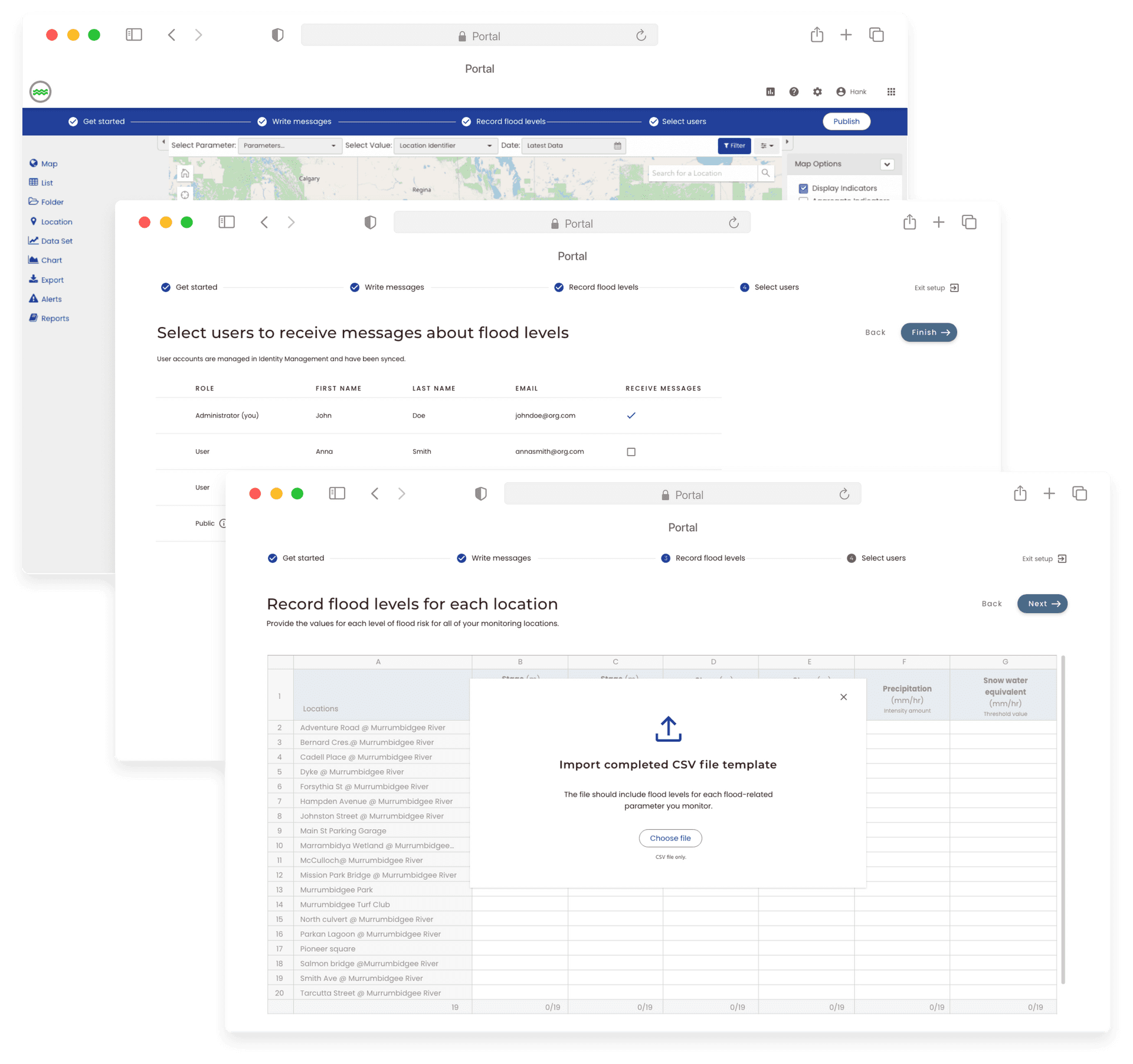
Team
Agile development team, project management
Role
UX/UI designer
Tools
Lean UX, project planning, user interviews, UX/UI
Duration
3 months
Background
In a corporate landscape, the need to foster strong cross-organizational collaborations is paramount for delivering exceptional products to our users. This project delves into enhancing the onboarding experience for new users of flood sensors from a recently acquired company, with the goal of promoting the adoption of our in-house flood monitoring software.
Strategic focus
Devoting time to strategize was instrumental in our success. We identified the following areas of opportunity:
Enhanced flood maps
Topographical data could significantly enhance the accuracy of flood predictions.
Software subscription plans
The introduction of new subscription plans for prospective customers can facilitate their transition due to low initial costs.
Simplified setup
Streamlining the typically complex setup process can encourage more people to try new solutions.
Problem statement
How can we facilitate immediate flood response for hydrologists and flooding specialists in small municipalities who have just acquired our software
Final design
After rounds of collaboration, user and stakeholder interviews, a simple onboarding was designed to enable flood responders to set up their data within minutes.
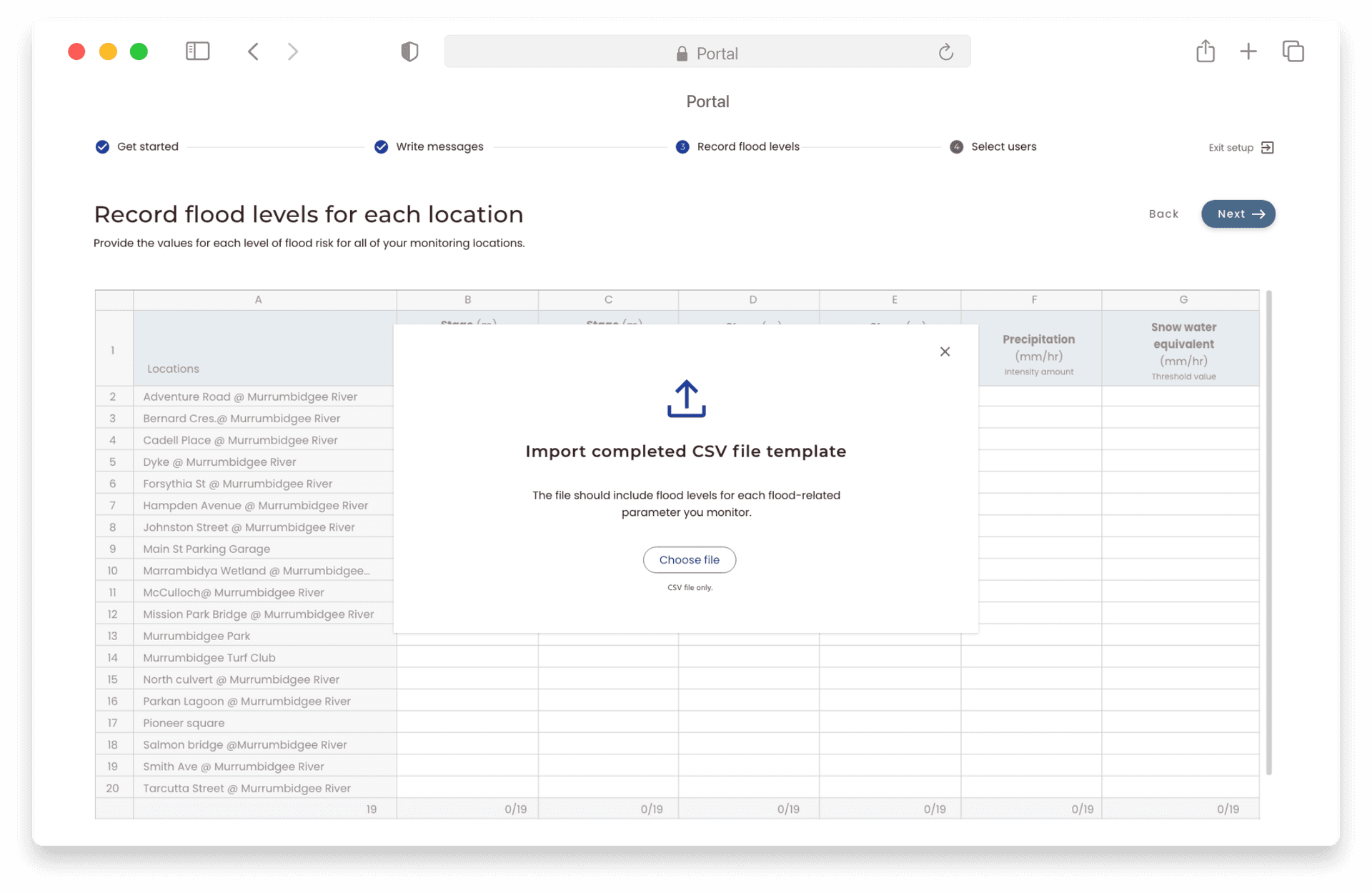
Iterative process - design sprint
Recognizing my lack of prior knowledge in flood monitoring, we chose an iterative approach to the design:
Day 1: problem definition & outcomes
Day 2: expert interviews and knowledge gathering
Day 3: competitive research
Day 4: collaborative solution sketching
Day 5: user journey maping and planning
User testing - key leanings
We engaged with seven municipality flooding experts to test our mock-ups. Through these conversations, we identified five potential target users, which allowed us to focus on building the Minimum Viable Product (MVP).
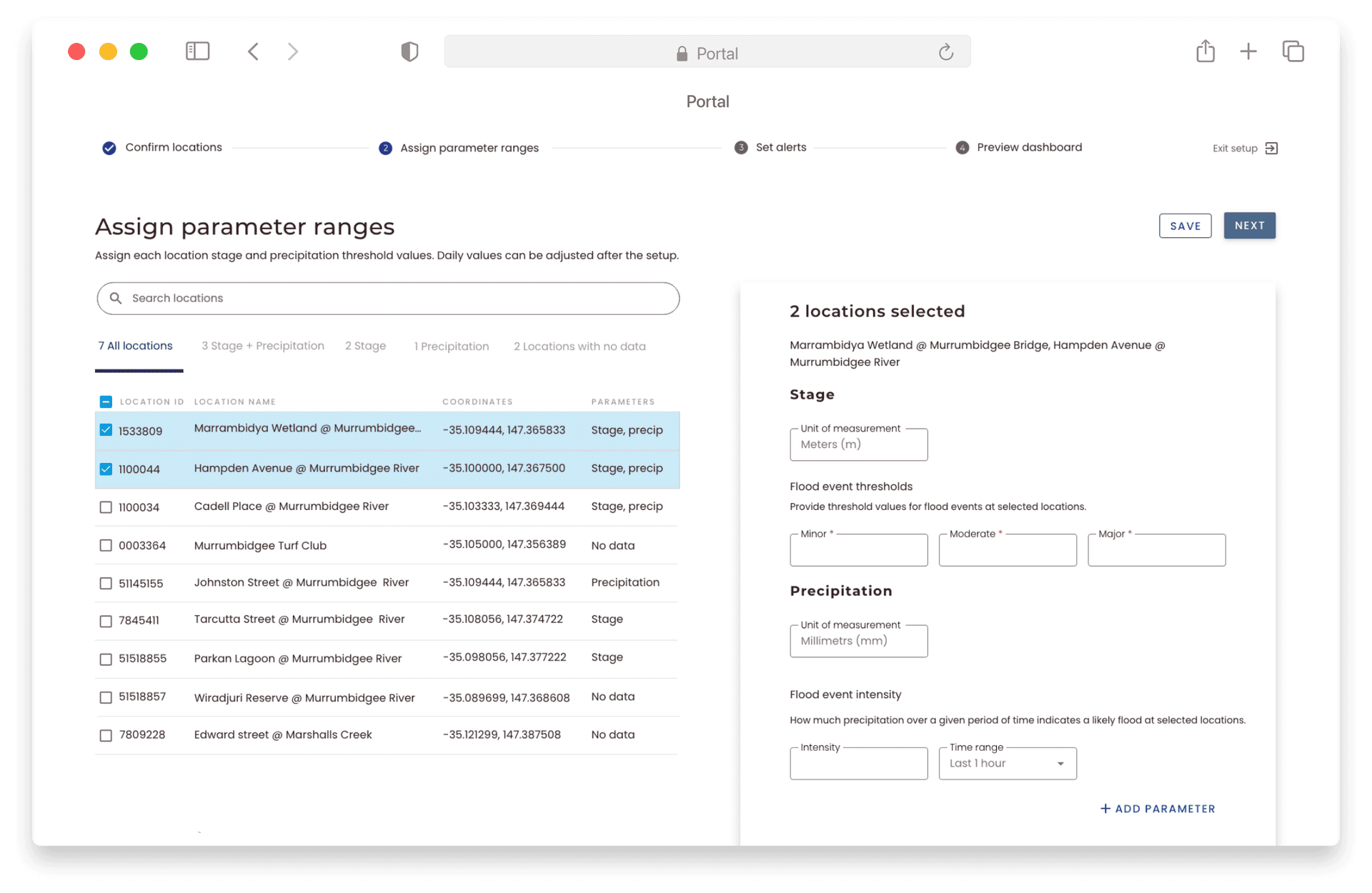
Tedious data upload
Uploading flooding data was a cumbersome task, particularly for small municipalities with up to 300 locations to monitor. Filling out nine fields per location was time-consuming.

Solution: pre-filled templates
We leveraged the existing threshold data stored in spreadsheets and created csv templates. This allows users to complete the task in minutes using a familiar tool.
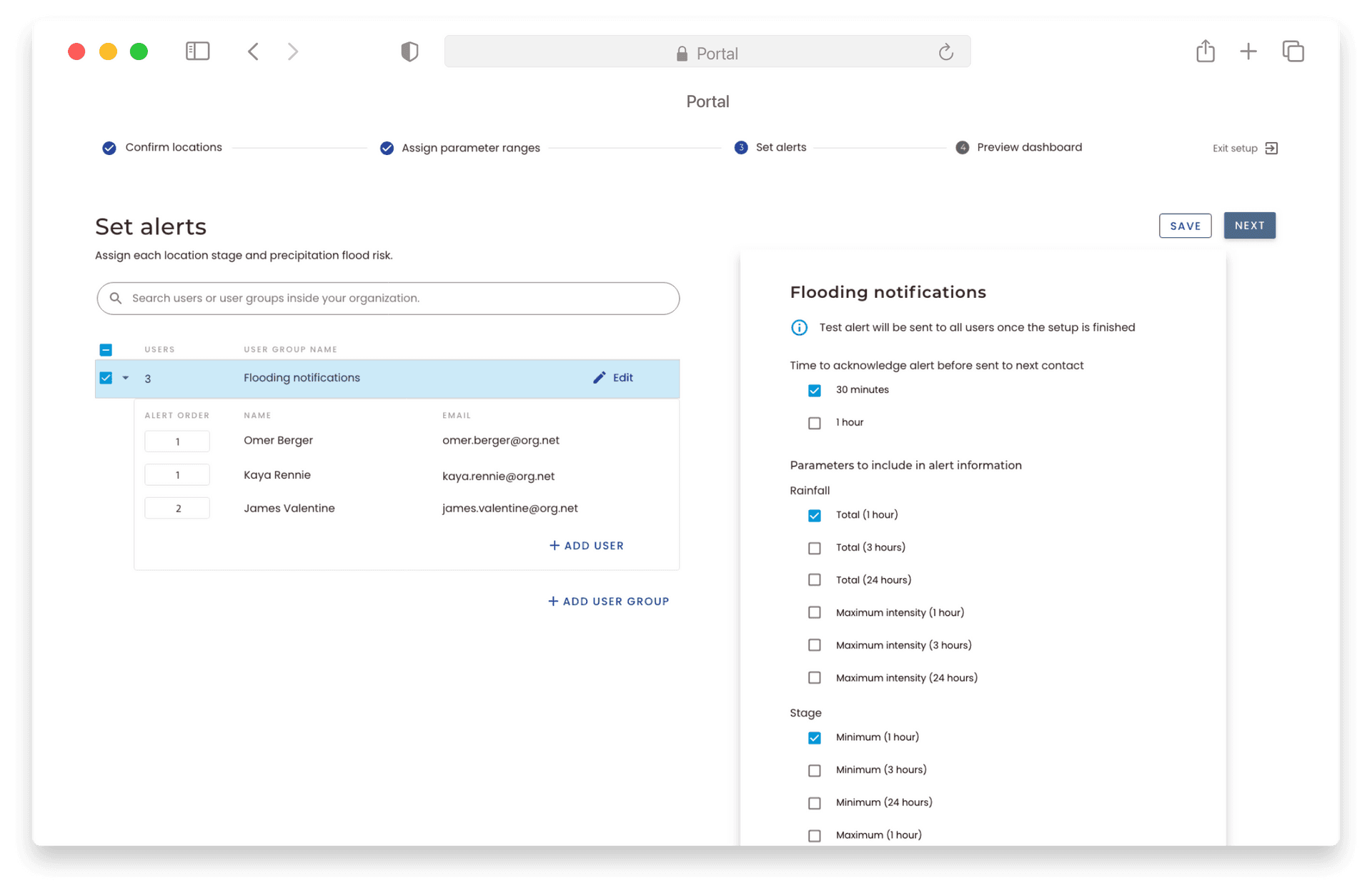
Granular alerts setup
Many municipalities monitor numerous locations but share data with only a few governmental organizations. Granularity introduced unnessesary complexity.
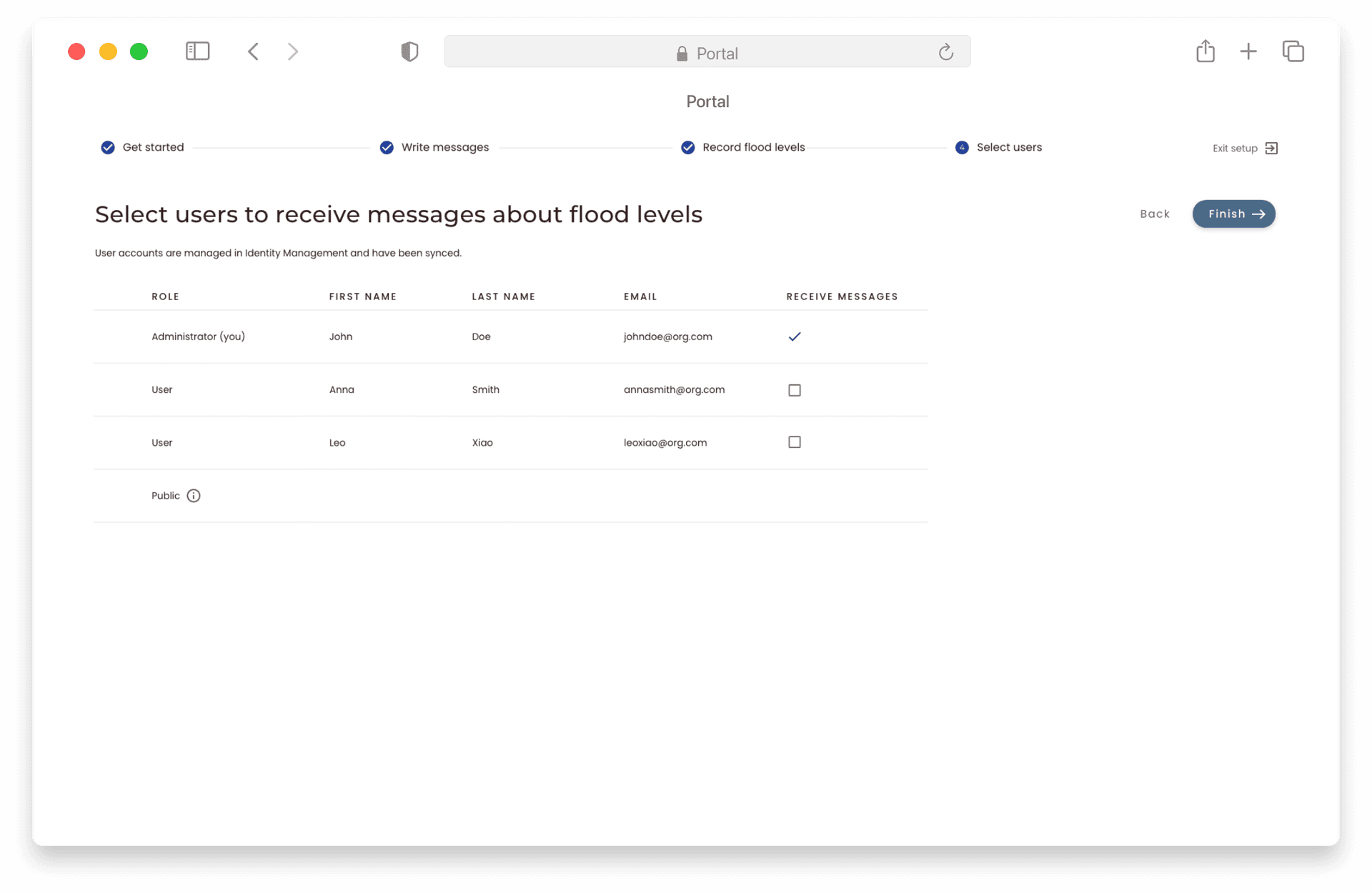
Solution: suggested alerts
We implemented suggested alerts by pulling data from different applications. Hydrologists now only need to make a choice regarding the recipients of updates.

Uclear publishing step
Users were uncomfortable with the immediate public data publishing. They expressed the desire to "try it out" before making data public.
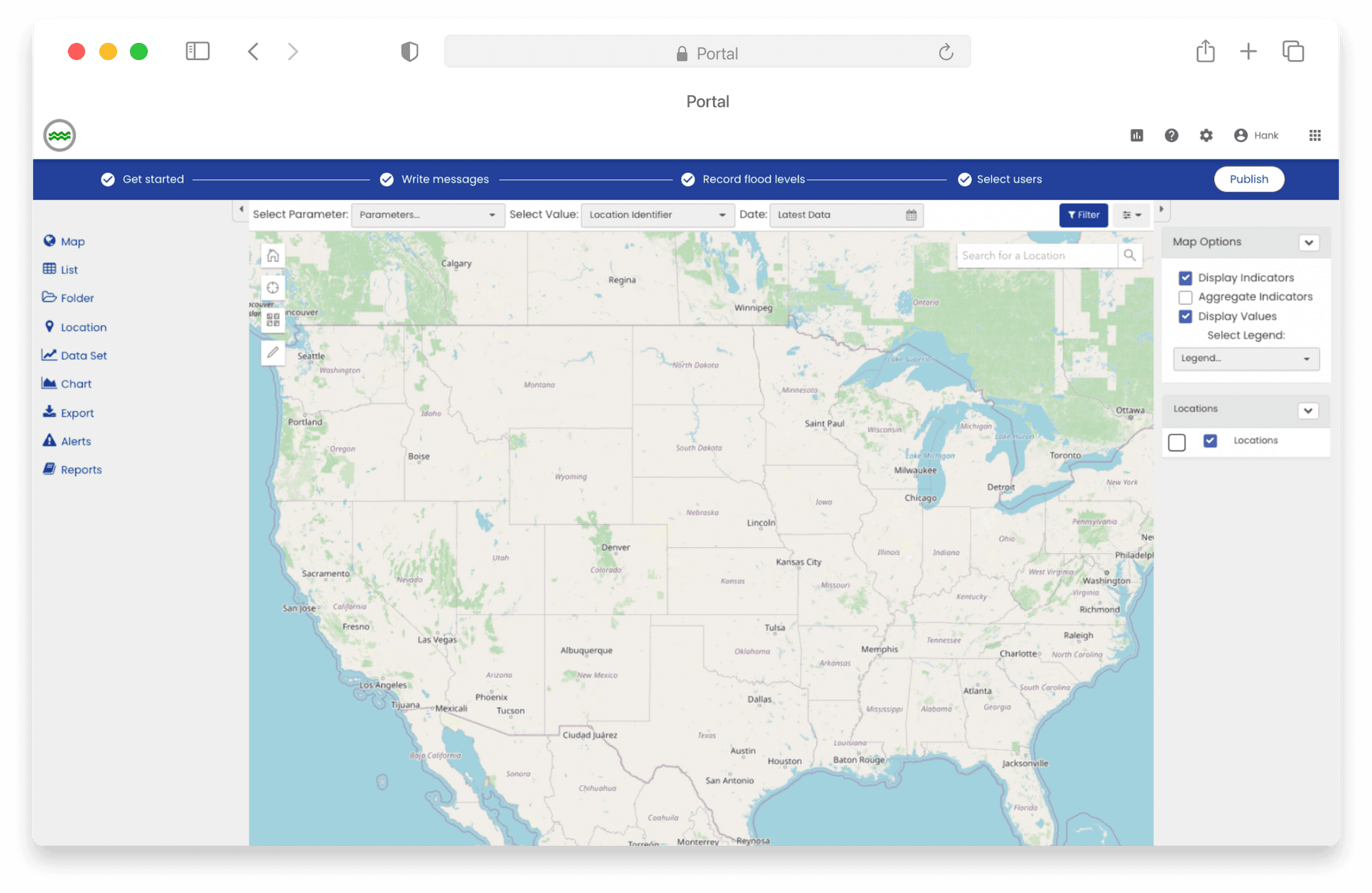
Solution: built in preview
We incorporated a built-in preview feature, allowing users to navigate through the system and experiment with it before finalizing the data for publication.
Impact
200 times faster setup
The streamlined setup process enables small municipalities to independently use our software without undergoing months of training.
Increased product interest
The simplified setup has made our product more attractive to a broader customer base, including those who don't possess the specific sensors we initially targeted.
Unified customer experience
User testing revealed a significantly improved user experience, creating a cohesive journey from product purchase to everyday use.
Read another case study

Unified hub for water quality products
Strategic launch of single sign-on to facilitate growth and acquisition.